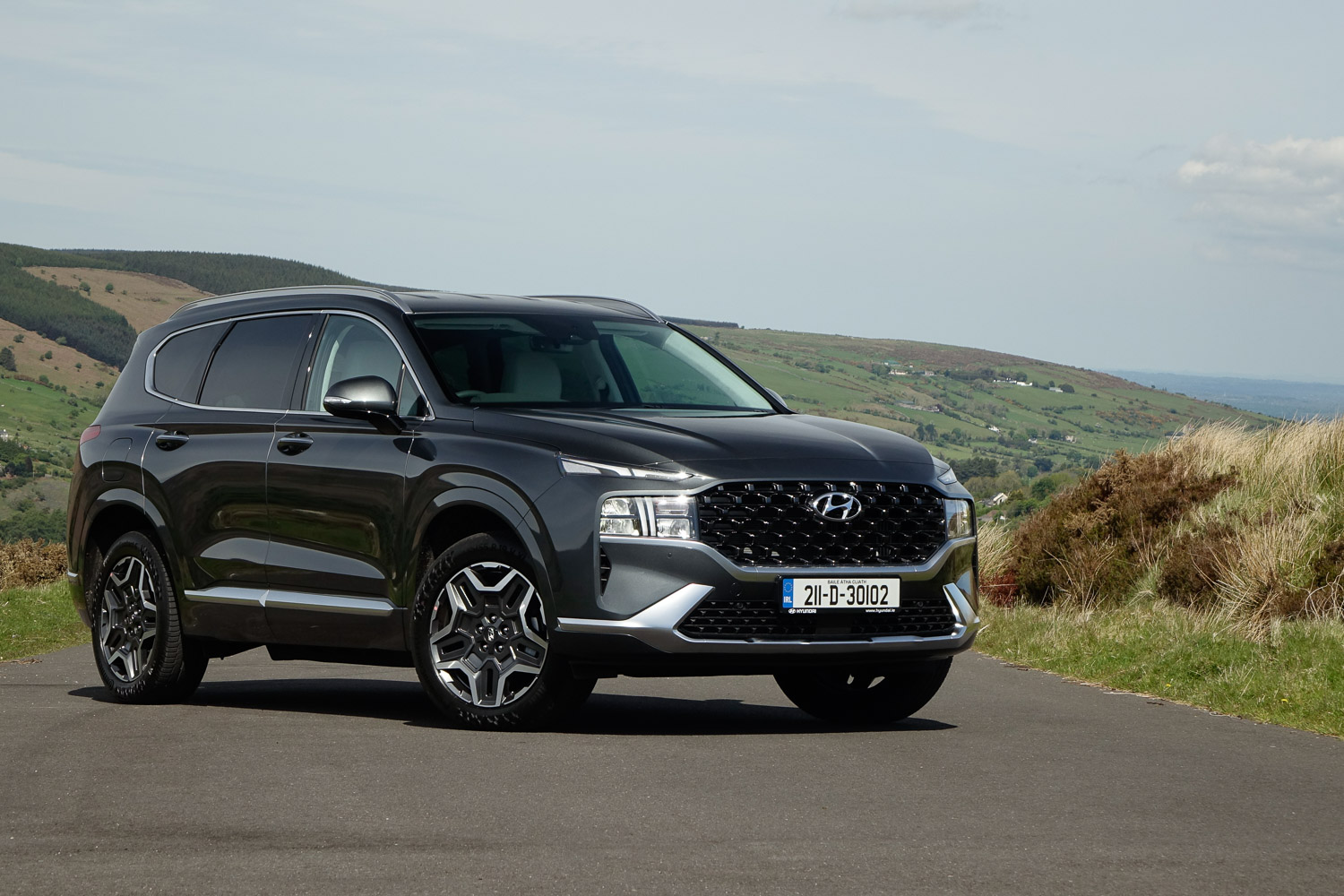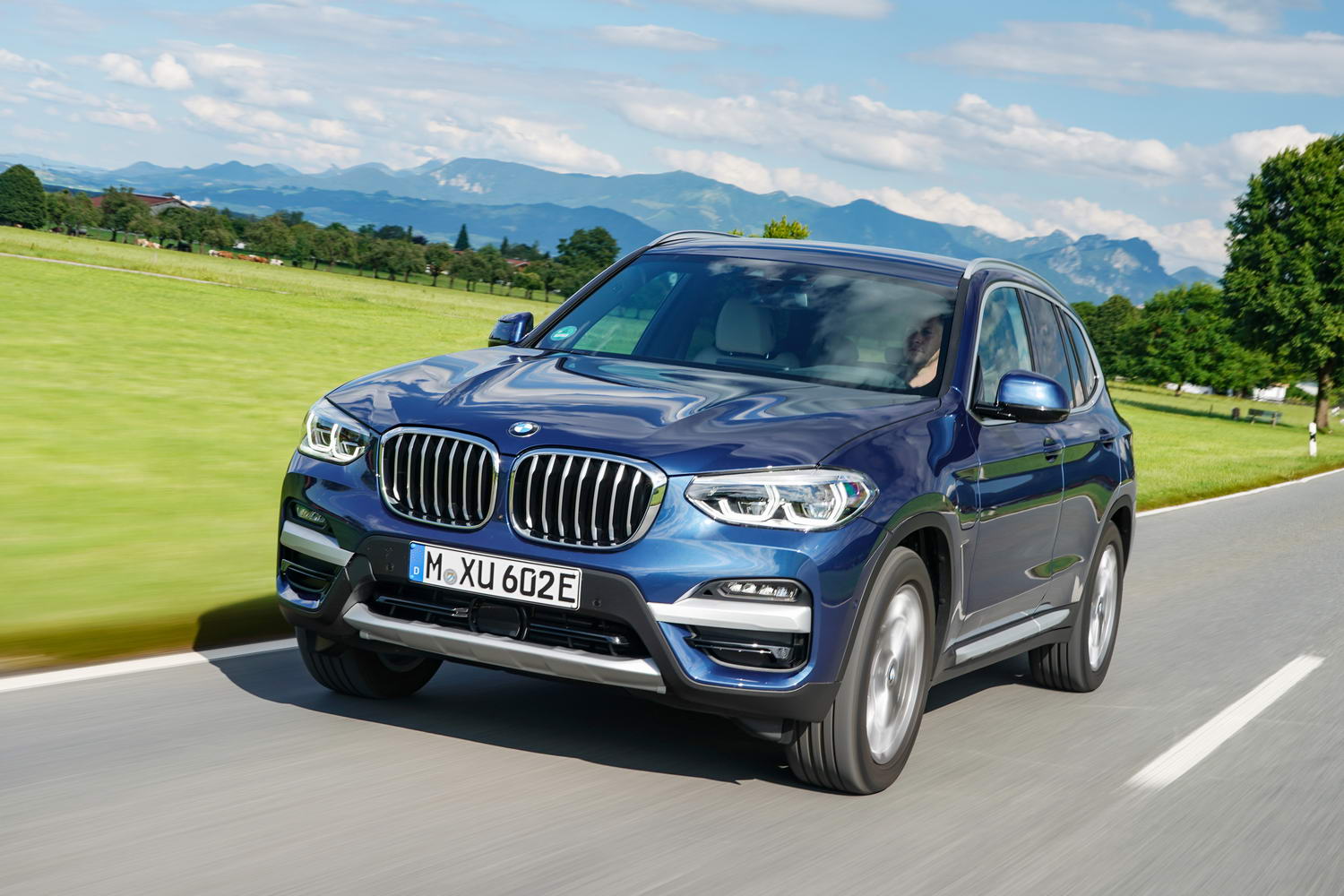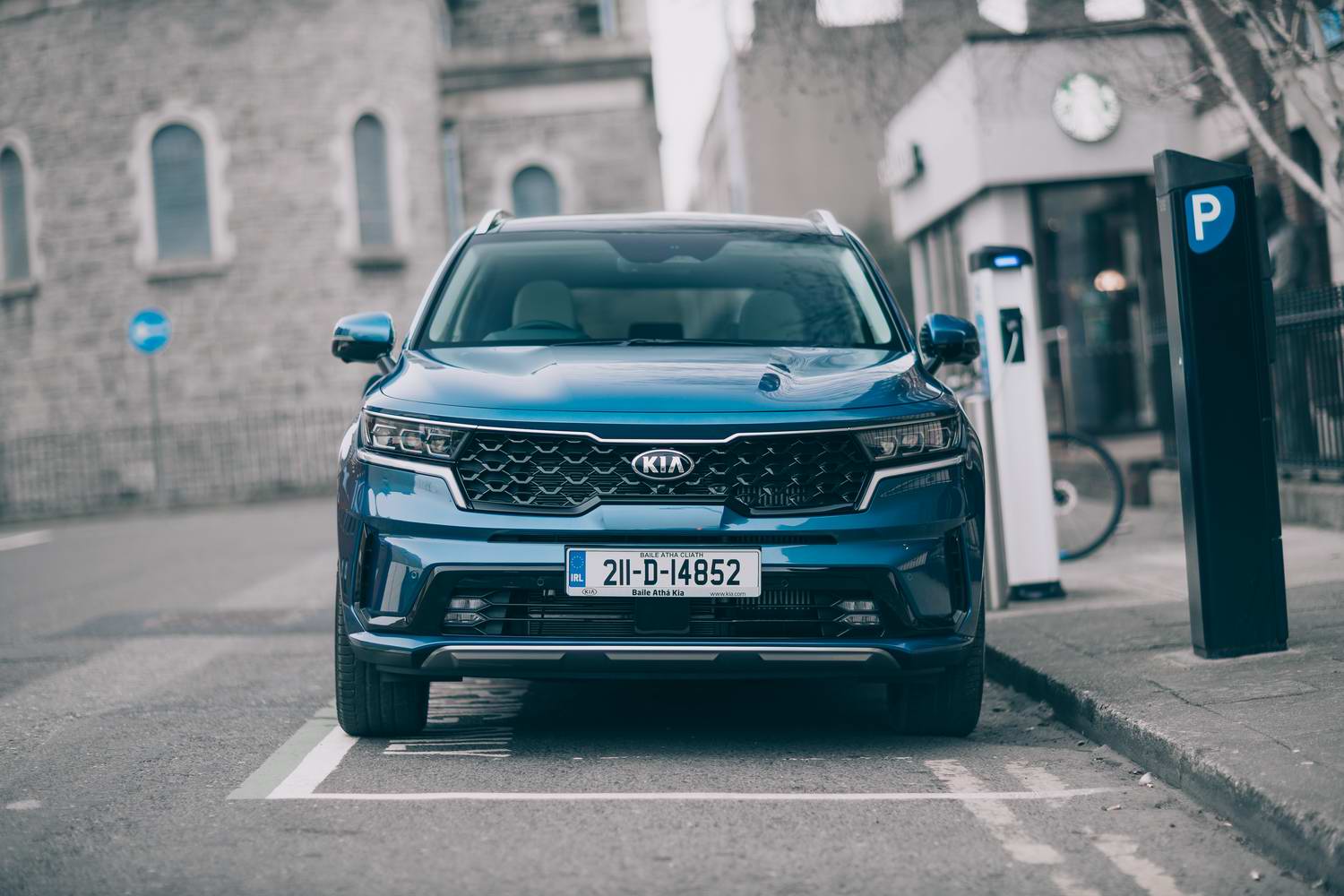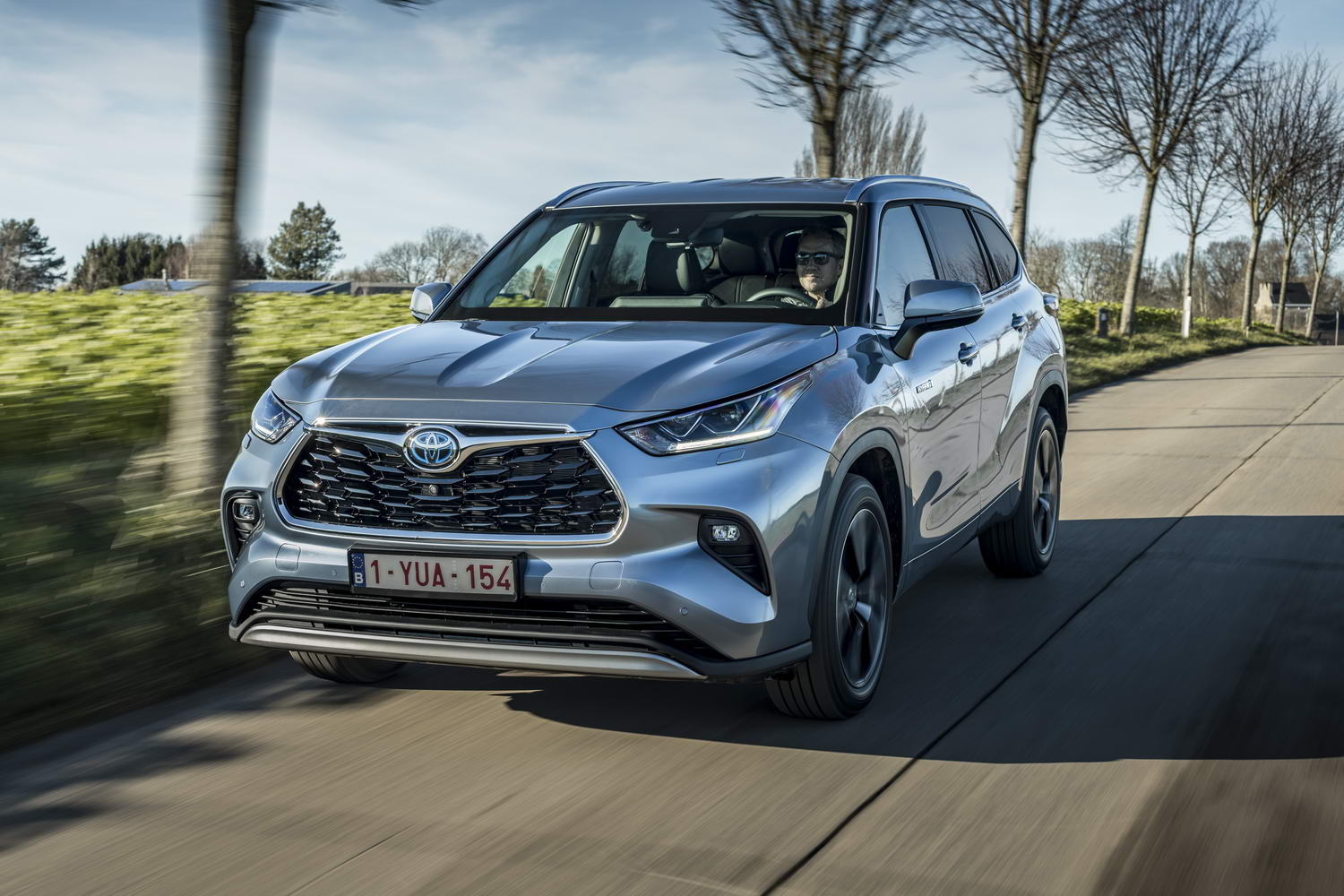Hyundai Santa Fe overview
The Santa Fe has long been an interesting model in the Hyundai line-up. Long before the Tucson ascended to the pinnacle of the Irish new car market, the second-generation Santa Fe (launched in 2006) went a long way to convincing punters that Hyundai had moved beyond its bargain-bucket origins and was starting to make cars competitive even with premium manufacturers. Indeed, there were reported cases of people trading out of a Lexus to get into a Santa Fe.
Since then, the Santa Fe has consistently been one of the classiest, most capable and, let's face it, best models in the Hyundai range. This iteration, although it looks visually similar to the Santa Fe launched in 2018, is actually all-new underneath, and although you can still buy diesel versions, it's this plug-in hybrid (and an upcoming regular hybrid) that is the star of the range. It's big, comfortable, luxurious and high-tech. The fact that it's not a surprise to see that description of a Hyundai is indicative of the image-friendly heavy lifting that the Santa Fe has done down the years.
This new version really is all-new, even though it may not initially look like it. The previous generation Santa Fe - a hugely impressive car, incidentally - was only launched as recently as 2018, but Hyundai has seen fit to totally re-engineer the car for this generation, using a new platform that's shared with the Kia Sorento.
Presumably keen not to upset the residual values apple cart too much, Hyundai has carried over the styling of the previous Santa Fe, especially at the rear of the car, where the styling is darned near identical. The basic silhouette is pretty familiar too, and things only get properly new at the front, where there's a vast new grille, with inset T-shaped LED headlights. It looks like a basking shark with glowing eyes, which is not very pretty, but is certainly imposing.
The Hyundai Santa Fe model range
This Executive Plus-spec plug-in hybrid version is actually the most affordable model in the current Santa Fe range, with a starting price of €55,945. You can get a better-equipped Premium model, which retails for €59,945, but to be honest, given the hugely generous standard equipment list (digital dials, big infotainment screen, push-button automatic gearbox, heated front and rear seats, four-wheel drive and of course the plug-in hybrid system) it seems like it's not really worth the upgrade.
If you step up to the Premium model, you get an all-round camera system, the clever blind-spot monitor that flashes up a camera view in the driver's display from under the door mirror, a powered tailgate and a panoramic sunroof. All pleasant things to have, but again I'm not 100 per cent convinced that the value is there.
However, both hybrid models are vastly better value than the diesel Santa Fes, which start at €64,895 and which, as we'll see, in real-world conditions aren't really all that much more economical.
Hyundai currently has an offer of €571 per month for a Santa Fe on a PCP finance deal, over 37 months, with a 5.9 per cent fixed APR interest rate, and an assumed deposit of €19,580. For the latest up-to-date deals, visit the Hyundai Ireland website.
The Hyundai Santa Fe interior
Without question, the Santa Fe's interior represents its strongest suit. Hyundai's build quality, both actual and perceived, has been steadily improving over the years, but this Santa Fe represents a distinct step up. If, for any reason, you thought that a big Korean SUV couldn't justify a €50k+ price tag, the Santa Fe's cabin does the job.
The seats in the front are huge and armchair like, and even extended periods behind the wheel don't reveal any shortcomings. You sit quite high, and the line of the dash is relatively low, so the view out of the front is both commanding and panoramic.
Behind, the middle row is plenty roomy enough for those sitting in the outer two seats, with acres of legroom and headroom, but the centre rear seat is narrower and less spacious, so if you're trying to carry three across the back, make sure that the third person is pretty skinny. There are ISOFIX mounts in the outer two rear seats, and a top-tether link in the centre rear. Helpfully, if you're putting in large child safety seats, the front passenger seat comes with switches on the side that allow you to alter the angle of the backrest, or even slide the seat forwards, without getting into the front of the car.
Rear seat passengers don't get their own temperature controls, but they do get a USB socket each, which is helpful. Behind them, the third row of seats - which folds and unfolds electrically - is relatively roomy, but still better suited to children than to adults.
Fold those seats flat, and you have a decent, but not exceptional, 571 litres of luggage space to play with. If you need to use the Santa Fe's full 1,649-litre load space, the middle row of seats folds entirely flat, too.
Back up front, the driver gets a big 12.3-inch digital dashboard, which can be configured in assorted styles. The central infotainment system, which uses a 10.25-inch screen, runs Hyundai's fairly simple and easy-to-use software, which includes live online services via the brand's 'Bluelink' setup. It all looks crisp and suitably expensive.
Thankfully, for all the screens, Hyundai hasn't forgotten that physical buttons are useful things to have when driving. So, the heating and air conditioning get proper switches and buttons, and even the automatic gearbox uses a push-button selector, which takes a little bit of getting used to.
On the centre console there's a large storage area, which includes a neat vertical space for stowing your mobile phone (a shame that Hyundai doesn't give you wireless connectivity for Apple CarPlay nor Android Auto, though) and there's more storage under the front-seat armrest. Allied to big door bins, all of this makes long journeys with a full car that much easier. You also get a wireless phone charging pad.
The Hyundai Santa Fe PHEV driving experience
It's a big, heavy car the Santa Fe, so it's clearly aimed more at long-haul comfort than back-road handling, and so it proves. The Santa Fe rides comfortably and steers accurately, but you can definitely feel its bulk on a twisty road, and it never does anything to try and goad you into driving it faster.
Quite the reverse, in fact - the more you ease off and lay back, the better the Santa Fe gets. It's a very refined car, even when the petrol engine is active, so you just sort of glide along, in immense comfort and near silence. At the end of a long journey in one of these, you'll not be left with a desperate need to get out again.
Visibility out the front is good, as we've mentioned, but the over-the-shoulder view is a little more restricted, thanks to a chunky D-pillar. That said, the Santa Fe is pretty easy to manoeuvre in town for something that's this big, and you can slide it into tighter parking spaces than you might imagine.
Being a plug-in hybrid, you'll be expecting it to be thirsty on long runs, but actually the Santa Fe performs remarkably well in this regard. Fully charge the 13.8kWh battery and you should be able to get around 45km of useable electric range, which is enough for most commutes, taking care of a couple of school runs. Obviously, on a long run with a depleted battery, you're not going to reach the impossible lows of the official 1.6 litres per 100km fuel consumption, but the good news is that the Santa Fe is commendably economical even so. We averaged 6.7 litres per 100km over more than 1,000km of driving (and would have been able to do much better than that if charging locations had been more available than they proved...). That's what we'd expect to achieve from a diesel Santa Fe, and the diesel can't do any driving at all on battery power... Long hauls on motorways will be a touch thirstier, but if you're driving on more give-and-take main roads, where the Santa Fe has a chance to recoup a little bit of battery power from braking, then it's really quite economical.
There's plenty of poke, too. A combined 261hp and 350Nm of torque means that, while it's no sports car, the Santa Fe can still get up and go when you need it to. All-round, it's a hugely impressive performance and proof that the plug-in hybrid concept is still one worth pursuing for some buyers.
Rivals to the Hyundai Santa Fe PHEV
The most obvious rival to the Santa Fe is the Kia Sorento, which of course uses the same basic chassis and structure, the same electrical architecture and the same hybrid powertrain. Some might say that the Kia is a little more handsome (certainly it's more conventionally handsome) than the Santa Fe, and it's fractionally better value for money, but to be honest it's too close a contest to call. Make the decision based on how conveniently located the nearest dealership is to you and you won't go wrong.
Toyota can offer you the seven-seat Highlander hybrid SUV, but that is a hybrid, and not a plug-in hybrid. That has the benefit of simplicity (and is a better choice for those without a driveway on which to charge a plug-in battery overnight), but obviously isn't quite as versatile when it comes to zero-emissions motoring. The Highlander is as good to drive as the Santa Fe, but its interior is markedly less impressive.
The Skoda Kodiaq is also a good rival to the Santa Fe. You can't yet buy it as a plug-in hybrid, but one is in the pipeline and in the meantime, the Kodiaq has handsome looks, a well-made and roomy cabin and sharp pricing on its side. The Hyundai does feel a distinct step ahead in luxury terms, though.
Our verdict on the Hyundai Santa Fe PHEV
Forgive us for quoting the name of the website in the verdict, but the new Santa Fe plug-in hybrid is a very complete car indeed. You might quibble slightly with the styling, and the €50-odd-thousand price tag, but there's no denying what an excellent all-round vehicle the Santa Fe is. It has one of the most effective plug-in hybrid systems on the market, and a level of interior fit, finish and luxury that quite frankly puts some Mercedes and BMW models to shame. As a way to transport as many as seven people for quite a long distance in quite a lot of comfort, it's pretty hard to beat.
What do the rest of the team think?
The plug-in hybrid Santa Fe is likely to become the default option in the line-up for the immediate future. It's smooth and comfortable and refined to drive, has a decent electric range and a luxurious cabin. Shame the hybrid model can't match the diesel Santa Fe when it comes to towing capability, however.
Shane O' Donoghue - Editor

































